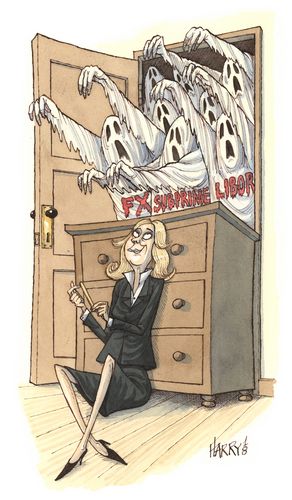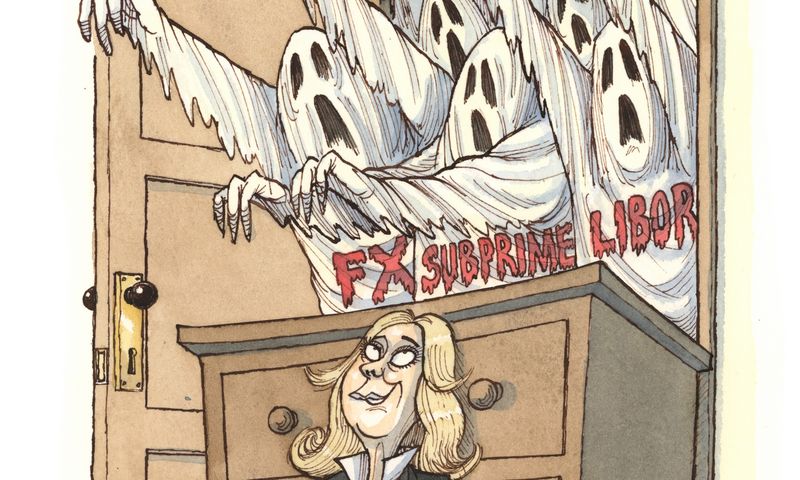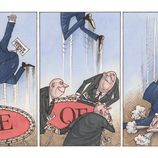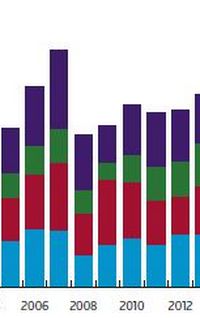A decade on from the demise of Lehman Brothers – and with a new generation of leaders at the helm – the banking sector has reached a turning point. Legacy issues from the crisis have faded in intensity and, while some potentially formidable challenges lie on the horizon, the industry narrative has at last shifted to thinking about the future.
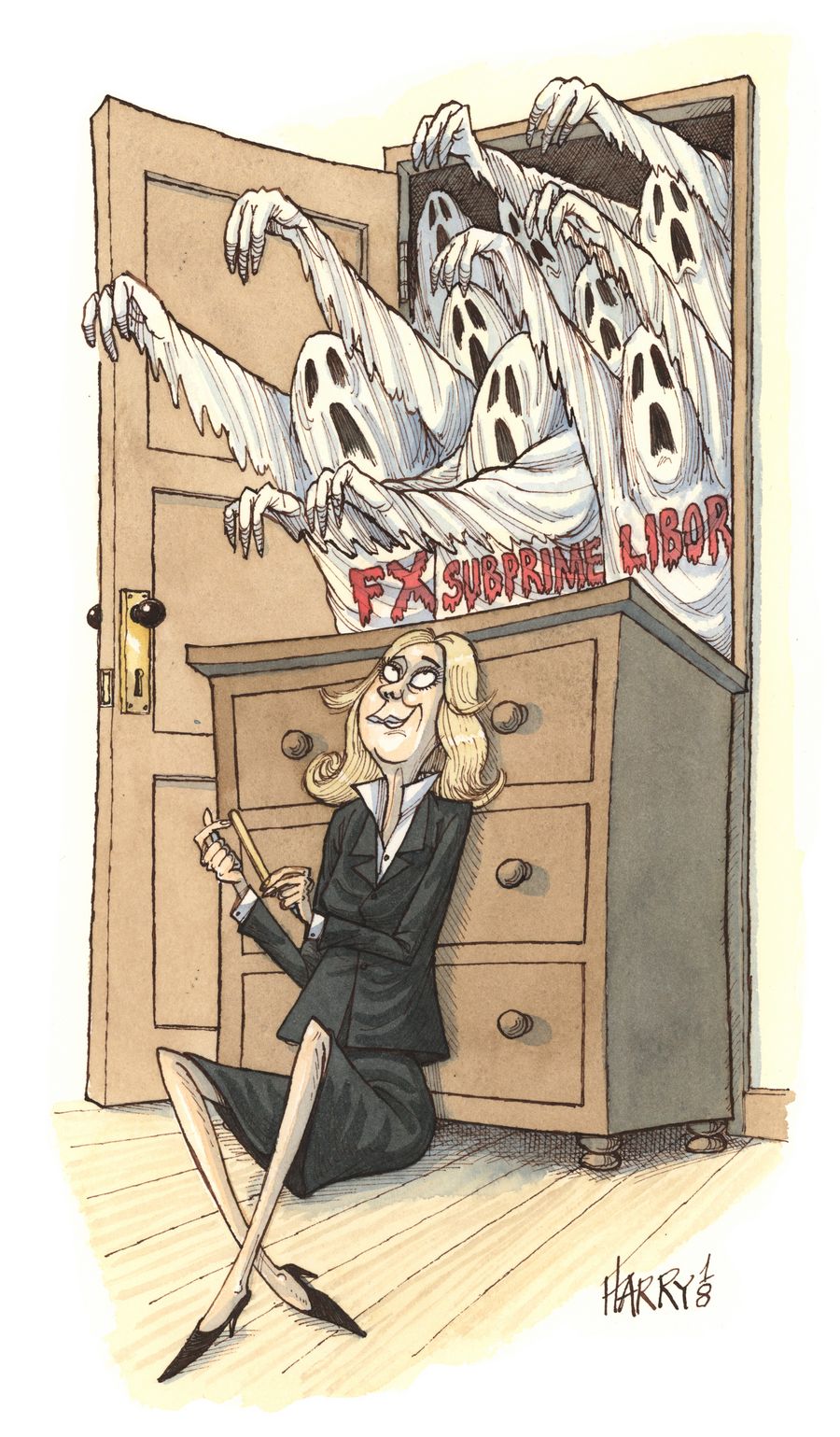
Painful memories of the global financial crisis may still be fresh, but there is an almost tangible sense that the banking industry has finally got up the confidence to re-write the playbook.
The world’s major banks have restructured and re-tooled. Marshalled by a tough new regulatory and supervisory regime, they have reduced risk-weighted assets, re-sized employee populations, rebalanced client portfolios, rebuilt product platforms, re-thought geographical footprints and redesigned IT, data management and other operational architectures. They are simpler and less fragmented organisations, better capitalised, less leveraged and more liquid.
“We are getting toward the end of a regulatory super-cycle,” said Matthieu Lemerle, senior partner at McKinsey and the firm’s lead on European capital markets and investment banking.
“From that point of view, regulators have achieved one of their primary goals, with much higher capital ratios than 10 years ago. If you see this as a proxy for the ability of banks to absorb shocks, then you have a much stronger and sounder banking sector than 10 years ago.”
Getting to this point has not been easy. It has been a decade of looking backwards, trying to make the best of a bad situation, fixing poor governance and dealing with the consequences of bad, sometimes illegal and occasionally criminal, behaviour.
The theme of cultural revolution in banks has arguably been over-engineered for effect. But US$300bn-plus in fines meted out to banks for crisis-era wrongdoing will have had their impact. As will US$100bn-plus in additional annual compliance costs the industry is estimated to have taken on.
The key challenge for banks is how they break out of the period of low profitability. The long-run cycle of massive central bank liquidity stimulus via ultra-low interest rates and quantitative easing has crushed banks’ net interest margins, while the low-growth environment, regulatory restrictions and a degree of risk aversion have severely curtailed money-making opportunities. This has squeezed returns on much higher equity bases.
“Banks are starting to realise that they cannot cut their way to greatness, and the old architecture of the industry is increasingly being disrupted by regulation, data and technology,” said Lemerle.
”The only response to this is offence, not defence. Banks need to look forward. They need to think about growth, about really transforming their operating model at scale, about new threats such as cyber and about a completely different people model.
“The sector needs to raise its ROE above cost of equity. ROE is stable but unspectacular, especially in Europe, and revenues are moving sideways overall. Corporate and investment banks will need to find new areas of growth, which can be tricky in a market which is overall flat,” said Lemerle.
”But there are interesting niches to be found. The challenge is for individual banks to identify what will be relevant for them, where they can beat the competition – which increasingly includes new non-bank entrants – through innovative business models.”
CHALLENGES, BUT NEW ONES
With the US Federal Reserve already in tightening mode and the European Central Bank winding down its asset-purchase programme with expectations of a rate rise in autumn 2019, the underlying scenario is changing.
Monetary authorities will remain cautious about the pace of rate increases and will be particularly keen to avoid any disorderly impacts from the normalisation of highly-distorted asset prices. The flow-through to higher margins and better bank earnings is definitely out there but it will be gradual.
“It does feel like this cycle is fading and the benefit for banks’ profitability will be considerable. But the view looking forwards will still be challenging,” said Jonathan Wills, a partner in the corporate and investment banking practice of Oliver Wyman.
“There are numerous structural issues that senior management also still needs to address: fierce competition for market share across all products, a secular decline in profitability across cash equities, the challenge of strategic adjustments to Brexit in an EMEA region that already generated low ROE, the need to reposition fixed-income business portfolios as volatility returns to macro, and as credit (particularly leverage finance) comes under pressure from an increasing interest-rate environment.”
But banks today are leaner, meaner, cleaner and better placed to deal with incoming challenges. Bankers are cautiously optimistic.
“Global markets have started correcting after a strong multi-year run and we’ve witnessed a repricing of assets as both interest rates and trade tensions have risen,” said Franck Petitgas, head of international at Morgan Stanley. “But the economic backdrop continues to be positive, with strong levels of activity, investment and [M&A] backlog.”
SUCCESSION
Notwithstanding some potentially thorny issues on the horizon, the fact that many of the world’s major banks have started to pull the trigger on executive succession is a key factor supporting the notion of a shift into a different part of the strategy cycle, especially where succession is predicated not on removing incumbents by apportioning blame for legacy failures but on creating a forward-looking dynamic.
Just at some of the biggest banks: BNY Mellon, Deutsche Bank, Goldman Sachs, HSBC, Mizuho and SMBC have all had new bosses this year and last. Santander and State Street get new CEOs in 2019, while there is gossip and speculation about other CEO vacancies at other major banks opening up in short order.
Banks such as JP Morgan and Morgan Stanley made organisational changes in 2018 that are widely seen as grooming exercises for future leaders. Others are expected to make such announcements in 2019. And new faces have occupied the corner offices of a host of other large banks, too.
New chief executives bringing in new ideas and implementing organisational changes to execute them without the mind-clutter of restructuring or the baggage of the crisis will give rise to a series of exciting new opportunities. Banks will clearly still need to demonstrate growth in revenue and market share, but what the new bank CEOs and new divisional heads are definitively not tasked with doing is fixing or recreating what was there before the crisis. Those days are not coming back.
TECHNOLOGY
A new generation of leaders is looking at banking strategy and tactics through a different set of lenses. Environmental sustainability, cyber-risk and better governance (including greater gender diversity) are all high on the agenda. But driving attractive marginal returns will centre increasingly on the application of disruptive technologies and open-architecture technology platforms, automation, digitalisation, artificial intelligence, Big Data, cloud computing, and tools and apps across retail, consumer, corporate, institutional and investment banking.
“Harnessing technology to solve problems and create opportunities for clients is critical for success in 2019 and beyond,” said Stephanie Cohen, chief strategy officer at Goldman Sachs. ”We are investing in disruptive platforms and embracing unique partnerships. Ultimately, it’s about ensuring that we are at the forefront of innovation so we can deliver differentiated products and services.”
This mode of thinking captures the Zeitgeist. Clare Woodman, head of EMEA at Morgan Stanley, says corporates remain focused on exercising opportunities around strategic growth while ensuring the asset mix of their business model is financially sound. Additionally, she says, margin pressure is leading to a renewed push on cost efficiency. “But driving all those imperatives,” she said, “is an intensification of focus on sustainability and technology – and, increasingly, workforce diversity.”
McKinsey’s Lemerle believes one of the most exciting avenues being explored by a number of players is how to partner with others to create technology-driven ventures that re-invent elements of the business.
“This is especially true in some of the most challenged areas of trading, for example, where it is increasingly clear that traditional, incremental measures won’t work. Non-bank market-makers have shown that a technology-driven model unencumbered by legacy architecture can be very powerful,” he said.
“While efficiency metrics have improved overall, costs remain sticky and traditional measures alone won’t be enough to restore CIBs to sustainable profitability levels. So digitisation, electronification and automation will need to move from the lab to full-scale industrial-strength implementation. Wholesale banking has been behind retail on this but is starting to catch-up.”
CONSOLIDATION
Banks still dealing with problem exposures are clear outliers rather than sector-representative. The only major bank still writhing in a potentially existential crisis is Deutsche Bank, whose future as a stand-alone bank remains in doubt. The gossip for much of 2018 revolved around an increasingly cheap Deutsche being taken over or merging with Commerzbank at some point to form a national and regional champion, something ardently desired by German and European politicians as a bulwark against further encroachment by US banks.
In this regard, the political narrative in Europe has changed. The era of regulatory fixation with size and pre-occupation with banks being Too Big to Fail has given way to a new focus on promoting banking efficiency and supporting large-scale sector consolidation – particularly cross-border mergers of large banks.
That is a 180-degree policy turn as the realisation dawns on policymakers that Europe in particular remains heavily over-banked and has a highly under-developed corporate bond market. There are too many branches, too many employees, too many banks with chronically low ROEs and low market shares offering undifferentiated products and services and exhibiting poor organic capital creation.
This creates a scenario ripe for disruption by challengers and disruptive technologies. Low-level consolidation is taking place slowly at the margins but large-scale cross-border shifts look unlikely in the present cycle, particularly given the way capital regulations and resolution frameworks have evolved.
The operational realities of running a large cross-border bank dealing with ring-fencing, subsidiarisation and intermediate holding companies would appear to run counter to the notion of a single market and the lofty ambitions of banking and capital markets union.
“There’s a paradox at the heart of the European banking industry. The current landscape is over-banked and there is an almost universal acceptance that competition between fewer, stronger banks would be to everyone’s benefit: customers, shareholders and regulators,” said Oliver Wyman’s Wills, who believes consolidation would resolve many of the problems facing European banks as larger banks would immediately enjoy scale benefits, driving down operational and funding costs and improving returns.
Pan-regional banks could diversify risk across products and client types while well capitalised European banks could deepen the region’s capital markets and invest in innovation. Retail and corporate clients would benefit through better products and better pricing. The end of central bank stimulus could accelerate the process by taking away the protection it provided to weak banks that enabled them to avoid restructuring. The emerging resolution framework with its in-principle end to taxpayer-funded bank bailouts could also provide impetus for takeovers.
European Banking Union was designed partially to be a core “condition precedent” for cross-border consolidation but few observers believe the conditions are in place today, although the sector looks like it is heading in the right direction. Maximising value such that banks can go into a merger as highly valued as possible has partially been achieved by restructuring, cost reduction and banks testing the balance between traditional and digital models.
Better asset quality and lower NPL ratios will improve confidence among buyers about the true value of the assets they’re buying. A more convoluted condition is a level playing field in Europe. There may well be a single rulebook but bank regulation still differs between countries, as do tax codes, legal systems and political attitudes to foreign ownership. The highest potential synergies will come from cross-border mergers but the risk of not reaping the full benefits because of local difficulties is also higher.
An important driver of consolidation and one that is impossible to time is the return of animal spirits.
“Mergers are expensive and complex and it can be hard to ensure that shareholders benefit. CEOs need to have a clear strategy, confidence in their ability to execute as well as a high risk-appetite,” said Wills.
“When consolidation in an industry does start, it can move surprisingly quickly. As plain boys at school dances have known for generations, your chances of being left without a dance partner is a function of both your own relative attractiveness and the remaining number of potential partners. However shy the gathering, as soon as the first couple pairs off, things can move quickly.”
To see the digital version of IFR Awards 2018, please click here.
To purchase printed copies or a PDF of IFR Awards 2018, please email gloria.balbastro@refinitiv.com.
